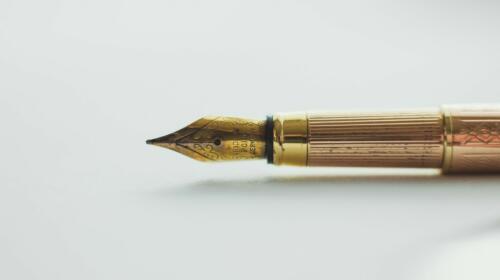Journalists Are People Too!
“The Media.” We know them. We love them. We want them to love us. As public relations professionals in the art of media relations, we spend a significant portion of our lives studying journalists’ and writing, tracking their interests, and learning what makes them tick. Much of the fun of PR is the challenge of finding the perfect media target for a perfect pitch. When you have a story that sticks, those are the moments that make the hustle worth it!
In the often chaotic world of PR, it can become easy to think of the media as mythical beings sitting in a castle in the clouds. However, it’s important to remember, the media you’re pitching are people, too! While some trends are going to be relevant and interesting to everyone, it is key that each journalist should be treated as an individual. When we remember that, our relationships have a much better chance of bringing value to ourselves, our clients and our industry.
Personalize, personalize, personalize!
If someone gives us a nice gift or letter, it doesn’t feel as special if you find out they gave it to a bunch of other people, right? We all want to feel special – it’s human nature! The same goes for media contacts. Whatever their field or beat, journalists and writers everywhere are bombarded with deadlines, ever-changing trends and urgent last-minute news. Sending them a pitch that clearly went to a large pool of recipients and has no indication that you took the time to show why it is a good fit for them and believe it can help them do their job better is less likely to get a positive response.
Here are some tips for humanizing and personalizing your correspondence with the media:
- Perfection is not always paramount – Always treat journalists with the professionality that is due, but don’t be afraid to stray from a perfectly primped pitch (say that 5 times fast). Sometimes, a pitch that cuts through all the clever quips and fluff and gives it to them straight will let a journalist know you’re there to help them do their job and provide a valuable quote, interview, product, or whatever the asset may be. Sometimes something less “pretty” will let them know it’s a human at the other side of the e-mail, not just a “pushy PR person.”.
- Don’t keep it all business – Journalists work around the clock under extreme deadlines and with a constant flurry of fresh news to discuss. They are inundated with pitches and press releases from PR professionals wanting to show off their clients. The pitches that are going to stand out are those that include a genuine “how are you?” or, if you know where they’re based, a well wish for them to stay warm/dry/cool in whatever crazy weather they may be having (or another similar greeting). While these seem like small talk, a pitch that strays from merely throwing information at a reporter and shows normal human courtesy will go a long way and your efforts will be noticed.
- Show them you’re paying attention – One of my pitches that turned into a great media relationship for me was when I added, “I realized you wrote the review that inspired my latest bedsheets purchase!” (which was true!). It showed that I was familiar with their interests, had genuine takeaways from their work, and just gave a great jumping-off point to having friendly communication, rapport and contributed to relationship building.
- Know when not to pitch –This may seem counterintuitive, as pitching is our job. Be sensitive to the news cycle and pay attention if a story is breaking or unfolding over several days that they will 100% be busy reporting on. It will come across as tone-deaf e-mailing them about a client’s predictions for the coming year when a crisis is unfolding. We all want journalists to remember our client, but sometimes making no impression is the best impression. All it takes is waiting for a more appropriate time to make your mark and get your well-deserved media coverage!
Now you know why humanizing media relations strategies is the golden ticket to valuable coverage opportunities! Remembering these tips will help you build respect and rapport with great journalists – after all, it’s called media relations.
A little lost in the media landscape and looking for guidance? Check out our PR Services and drop us a line!



